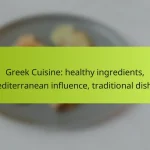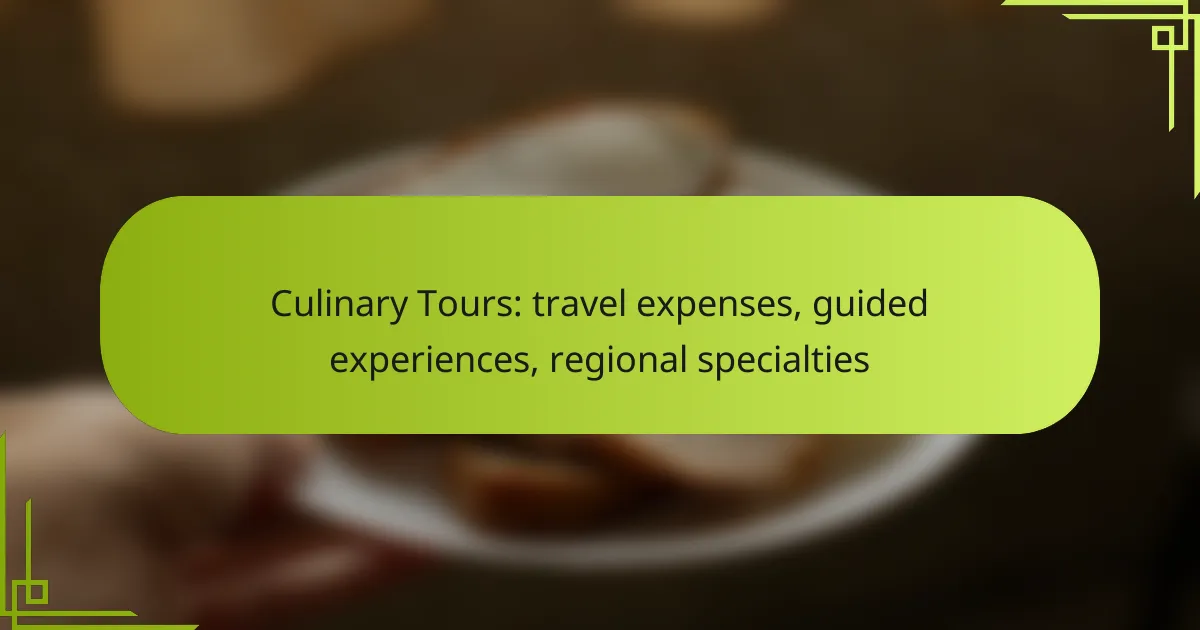Fine dining represents the pinnacle of culinary artistry, where high-end ingredients and innovative tasting menus come together to create unforgettable dining experiences. Restaurants often feature curated selections of exquisite dishes, allowing guests to explore a range of flavors and textures that reflect the chef’s creativity. With premium pricing, these establishments prioritize quality and craftsmanship, showcasing luxurious ingredients like truffles and Wagyu beef that elevate each meal to new heights.

What are the best fine dining restaurants in Toronto?
Toronto boasts several exceptional fine dining restaurants known for their high-end ingredients and innovative tasting menus. Among the top choices are Scaramouche Restaurant and George Restaurant, both offering unique culinary experiences that reflect the city’s vibrant food scene.
Scaramouche Restaurant
Scaramouche Restaurant is renowned for its elegant atmosphere and exquisite dishes, often featuring seasonal ingredients sourced from local farms. The restaurant’s tasting menu showcases a variety of flavors, allowing diners to experience a range of culinary artistry in one sitting.
With a focus on contemporary French cuisine, Scaramouche offers an extensive wine list to complement its dishes. Reservations are highly recommended, especially during peak dining hours, as this popular spot can fill up quickly.
George Restaurant
George Restaurant stands out for its creative approach to fine dining, blending global influences with Canadian ingredients. The tasting menu here is designed to take guests on a culinary journey, with each course thoughtfully crafted to highlight unique flavors and textures.
Located in the heart of Toronto, George provides a sophisticated yet welcoming environment. The restaurant frequently updates its menu to reflect seasonal changes, ensuring that each visit offers something new and exciting. As with Scaramouche, making a reservation in advance is advisable to secure a table at this sought-after dining destination.

How do tasting menus enhance the fine dining experience?
Tasting menus enhance the fine dining experience by offering a curated selection of dishes that showcase the chef’s creativity and the restaurant’s culinary philosophy. These menus typically feature multiple courses, allowing diners to savor a variety of flavors and textures in a single meal.
Curated culinary journey
A tasting menu provides a curated culinary journey that guides diners through a series of thoughtfully crafted dishes. Each course is designed to complement the others, creating a harmonious dining experience that highlights the chef’s expertise. This approach allows guests to explore unique flavor combinations and innovative techniques that they might not encounter in a traditional à la carte setting.
For example, a fine dining restaurant may offer a tasting menu that includes five to ten courses, each showcasing a different ingredient or cooking style. This structure not only elevates the meal but also encourages diners to appreciate the artistry involved in each dish.
Seasonal ingredient focus
Many tasting menus emphasize seasonal ingredients, which enhances freshness and flavor while supporting local agriculture. By sourcing ingredients that are in season, chefs can create dishes that reflect the best of what is available at any given time. This practice not only ensures high-quality meals but also promotes sustainability in the culinary industry.
For instance, a restaurant might feature asparagus in spring, heirloom tomatoes in summer, and root vegetables in winter, allowing diners to experience the distinct tastes of each season. This focus on seasonal produce can also influence pricing, as dishes made with readily available ingredients may be more affordable than those requiring out-of-season or imported items.

What high-end ingredients are commonly used in fine dining?
High-end ingredients in fine dining elevate the culinary experience through unique flavors and textures. Commonly featured items include truffles and Wagyu beef, both known for their exceptional quality and premium pricing.
Truffles
Truffles are a type of fungus that grow underground, often in association with specific trees. Their rarity and labor-intensive harvesting process contribute to their high cost, which can range from hundreds to thousands of dollars per kilogram, depending on the variety and season.
In fine dining, truffles are typically used in small quantities to enhance dishes with their intense aroma and flavor. They can be shaved over pasta, risottos, or even incorporated into sauces, adding a luxurious touch to the meal.
Wagyu beef
Wagyu beef is renowned for its rich marbling and tenderness, resulting from the unique breeding and feeding practices in Japan. The price of Wagyu can vary significantly, often costing several hundred dollars per kilogram, especially for the highest grades.
This premium beef is best enjoyed cooked simply to highlight its flavor, often served as steaks or in tasting menus. When ordering, look for specific grades like A5, which indicates the highest quality, ensuring a memorable dining experience.

What is the price range for fine dining in Canada?
The price range for fine dining in Canada typically falls between $100 to $500 per person, depending on the restaurant’s prestige, location, and the complexity of the menu. This range reflects the high-end ingredients and elaborate tasting menus that characterize fine dining experiences.
$100 to $500 per person
In Canada, fine dining establishments often charge between $100 and $500 per person for a complete meal. At the lower end, diners can expect a multi-course tasting menu featuring seasonal ingredients, while the higher end may include premium offerings such as truffles, caviar, and rare wines.
For example, a three-course meal at a mid-range fine dining restaurant might cost around $150, while a luxury venue with an extensive wine pairing could easily reach $400 or more. Special occasions, such as anniversaries or holidays, may also drive prices higher due to exclusive menus and limited-time offerings.
Factors influencing pricing
Several factors influence the pricing of fine dining in Canada, including ingredient quality, chef reputation, and restaurant location. High-quality, locally sourced ingredients often come at a premium, which is reflected in the menu prices.
Additionally, the reputation of the chef and the establishment plays a significant role. Renowned chefs or Michelin-starred restaurants typically charge more due to their expertise and the unique culinary experiences they offer. Location also matters; restaurants in major cities like Toronto or Vancouver may have higher prices compared to those in smaller towns.
Lastly, the dining experience itself—such as ambiance, service quality, and additional offerings like wine pairings—can significantly impact the overall cost. Diners should consider these factors when budgeting for a fine dining experience.

How to choose the right fine dining restaurant?
Choosing the right fine dining restaurant involves considering several key factors, including the type of cuisine, reviews, and overall dining experience. Prioritize what matters most to you, whether it’s the menu offerings, ambiance, or customer feedback.
Consider cuisine type
The type of cuisine is crucial when selecting a fine dining restaurant. Different establishments specialize in various culinary traditions, such as French, Italian, or Japanese. Understanding your preferences can help narrow down your options.
For instance, if you enjoy seafood, look for restaurants that emphasize fresh, high-quality fish dishes. Alternatively, if you prefer rich, hearty flavors, an Italian or French restaurant might be more appealing. Many fine dining spots also offer tasting menus that highlight their signature dishes, providing a comprehensive experience of their culinary style.
Check reviews and ratings
Reviews and ratings are essential tools for assessing the quality of a fine dining restaurant. Websites like Yelp, TripAdvisor, and Google Reviews can provide insights into the dining experience, service quality, and food presentation. Look for establishments with consistently high ratings and positive feedback from patrons.
Pay attention to specific comments regarding the tasting menu, ingredient quality, and overall atmosphere. A restaurant with a high number of reviews and a solid average rating is often a safe bet. However, be cautious of establishments with only a few reviews, as they may not provide a reliable picture of the dining experience.

What are the trends in fine dining for 2024?
In 2024, fine dining is increasingly focused on high-quality ingredients, innovative tasting menus, and premium pricing strategies. Key trends include a rise in plant-based options and interactive dining experiences that enhance customer engagement.
Plant-based fine dining
Plant-based fine dining is gaining momentum as chefs create exquisite dishes that highlight vegetables, grains, and legumes. This trend caters to a growing audience seeking sustainable and health-conscious dining options without sacrificing flavor or presentation.
Restaurants are experimenting with gourmet techniques to elevate plant-based ingredients, often incorporating elements like fermentation and smoking. Expect to see tasting menus that feature seasonal produce, showcasing the creativity and versatility of plant-based cuisine.
Interactive dining experiences
Interactive dining experiences are becoming a hallmark of fine dining, allowing guests to engage with their meals in unique ways. This can include chef-led cooking classes, tableside preparations, or multi-sensory presentations that involve sight, sound, and aroma.
These experiences not only enhance the dining experience but also create memorable moments that guests are likely to share. Restaurants may offer curated tasting menus that invite diners to participate in the cooking process, fostering a deeper connection to the food and the culinary arts.

How does fine dining differ from casual dining?
Fine dining is characterized by a higher level of service, premium ingredients, and often a tasting menu that showcases culinary artistry, setting it apart from casual dining. While casual dining focuses on comfort and affordability, fine dining emphasizes an elevated experience, including meticulous attention to detail in both food and atmosphere.
Service quality
In fine dining, service quality is paramount and typically exceeds that of casual dining. Staff are often highly trained, knowledgeable about the menu, and skilled in providing personalized attention to guests. This may include multiple courses served at a leisurely pace, with staff anticipating needs and offering wine pairings to enhance the dining experience.
Expectations for service in fine dining include formal attire for staff, a well-organized dining room, and a focus on creating a memorable experience. Tipping practices may also differ, with a standard gratuity of 15-20% being common, reflecting the higher level of service provided.
Ingredient sourcing
Fine dining establishments prioritize high-quality, often locally sourced ingredients, which can significantly influence the menu and pricing. Chefs may select seasonal produce, sustainably caught seafood, and premium meats, ensuring that each dish highlights the best flavors and textures available. This commitment to quality often results in higher costs, reflected in menu prices.
Many fine dining restaurants also emphasize unique or rare ingredients, such as truffles, caviar, or artisanal cheeses, which can elevate the dining experience. When dining at such establishments, be prepared for tasting menus that may range from several courses to a full multi-course experience, often priced at a premium, sometimes exceeding several hundred dollars per person.










